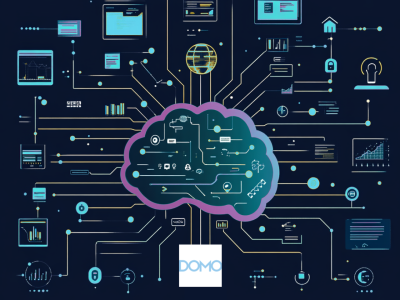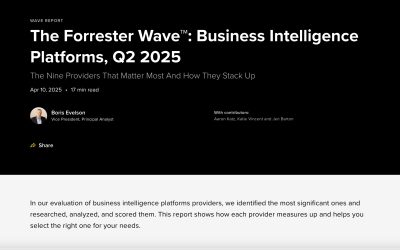How to get started with dark data analytics
If you are familiar with data analytics, then you may have heard of the term “dark data.” Dark data is data that has been collected by a business but is simply being stored and not used. However, dark data analytics can be used to extract value from this data.
Every day, businesses are collecting and storing vast amounts of data. However, most of this data is never used or analyzed. This dark data can be found in a variety of places, such as social media, customer surveys, and website logs.
Although dark data may seem like it would be challenging to work with, there are actually many benefits to using dark data analytics. From uncovering hidden trends to gaining insights into customer behavior, dark data analytics can be used to improve your business in several ways.
If you’re interested in getting started with dark data analytics, there are a few things you need to do. In this guide, we will learn how to set up a strategy to help you get the most out of your dark data.
What is dark data?
Do you ever take the time to do some “spring cleaning” on your computer? This often involves going through your files and deleting old or unused data. If you’re like most people, there are probably many files you no longer need.
This same principle applies to businesses as well. Every day, businesses collect data from various sources. However, most of this data is never used or analyzed.
Instead, this collected data sits in databases and servers, taking up space and costing money to store. This data is often referred to as “dark data.”

The risks of dark data
While dark data may not seem harmful, it poses many risks to businesses. First, dark data can take up a lot of space, which can be costly to store. Second, if this data is ever leaked or hacked, it could cause serious damage to your business.
Third, and perhaps most importantly, dark data can hide essential insights that could be used to improve your business. By not analyzing this data, you are missing out on valuable opportunities to make your business more efficient and profitable.
What is the difference between big data and dark data?
Big data is a term used to describe data sets that are too large or complex to be processed using traditional methods. This data is often unstructured.
Dark data, on the other hand, is data that is being stored but not used. This data could be structured or unstructured, and can still be valuable if it is analyzed properly.
What are the benefits of dark data analytics?
There are many benefits of dark data analytics. From uncovering hidden trends to gaining insights into customer behavior, dark data analytics can be used to improve your business in a number of ways.
Some of the most common benefits of dark data analytics include:
Finding hidden trends: Dark data can be used to uncover trends that would otherwise be difficult to find. This is especially useful for businesses that rely heavily on customer data, such as retail stores and e-commerce websites.
Improving customer service: By analyzing dark data, you can better understand your customers’ needs and wants. This information can be used to improve your customer service strategy.
Increasing operational efficiency: Dark data analytics can help you identify inefficiencies in your business operations. You can improve your overall efficiency and save money by fixing these issues.
Reducing costs: In many cases, dark data analytics can be used to reduce business costs. For example, if you can identify unnecessary steps in your manufacturing process, you can eliminate them and save money.

What does a dark data analytics strategy look like?
To utilize dark data effectively, you need to have a clear strategy in place. This strategy should involve the following steps.
Step 1: Identify the data you need.
The first step is to identify the data you need to collect. This data will vary depending on your business and what you hope to achieve with dark data analytics.
Identifying the data you need can be done manually or through automated means. But you need to have clear goals and expectations in mind before you begin collecting data.
Step 2: Collect the data.
Once you know what data you need, you can begin collecting it. Data is likely already being collected by your business, but it may not be in a format that is usable for dark data analytics.
How can you collect this data? There are a few different ways to collect data, depending on what type of data you need. For customer data, you may need to use surveys or customer interviews. You can use process mapping or data mining if you are looking for data on your business operations.
And if you need data about external factors not already collected by your business, you can use web scraping.
Step 3: Analyze the data.
Once you have collected the data, it’s time to start analyzing it. This is where dark data analytics comes in. You need to sort and organize the data to find patterns and trends.
This step will require you to use a variety of analytical tools, such as:
Data visualization: This tool will help you see the data in a way that is easy to understand. You can use data visualization to create graphs, charts, and other images that reveal patterns and trends.
Statistical analysis: This tool will help you find relationships between different pieces of data. For example, if you are looking at customer data, you may use statistical analysis to determine which factors are most likely to affect customer satisfaction.
Predictive analytics: This tool can be used to make predictions about future events. For example, if you are looking at data on past customer behavior, you can use predictive analytics to forecast future trends.
Step 4: Present the data.
Once you have analyzed the data, you need to present it in a way that is easy to understand and use. This step is important because it will determine how your business uses the insights from dark data analytics.
Analyze and optimize how you use dark data analytics
After implementing a dark data analytics strategy, it is essential to analyze and optimize it. This will help you get the most out of dark data analytics and ensure that it provides value to your business.
There are a few things you can do to optimize your use of dark data analytics, such as:
Automate data collection: Automating data collection can help you save time and resources. It can also help you ensure that you are collecting all of the data you need.
Analyze data regularly: Analyzing data on a regular basis can help you identify new trends and insights. It can also help you track your progress over time.
Integrate data into decision-making: Integrating data into decision-making can help you make better decisions. It can also help you ensure that dark data analytics is being used to its full potential.
The bottom line
Implementing dark data analytics can help you extract value from data that has been deemed unusable by traditional methods. By following the steps outlined above, you can get started with dark data analytics and start reaping its benefits.
Check out some related resources:

10 Looker Alternatives and Competitors in 2025

Business Intelligence Strategy: Development, Best Practices, and Examples






